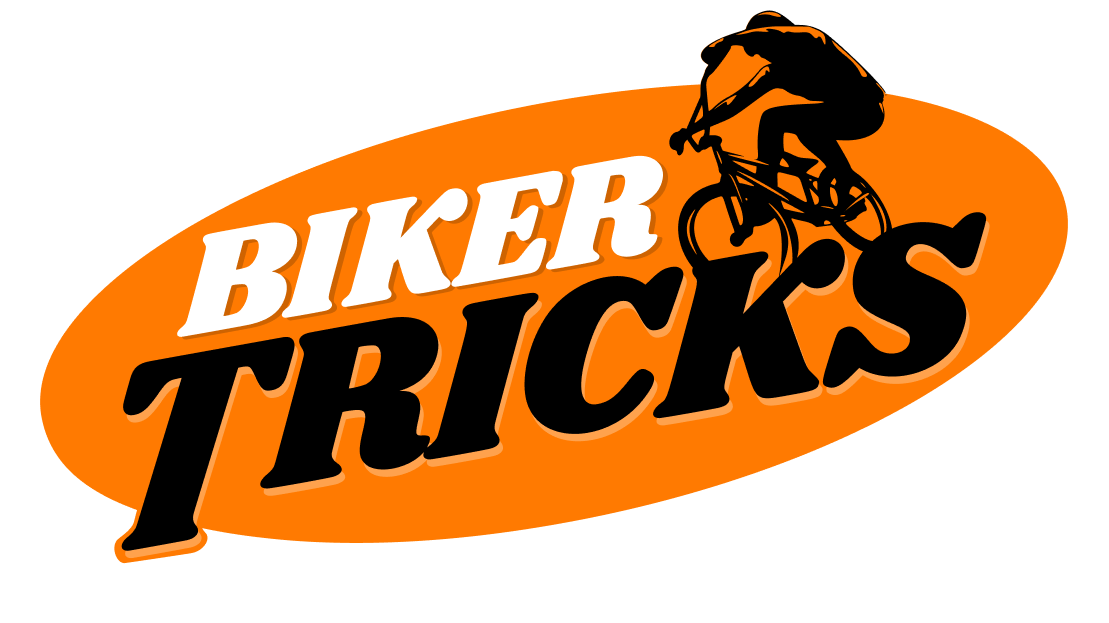Certainly, there are several ways for cyclists to protect themselves from aggressive drivers while riding. Wearing reflective clothing and using flashing bike lights are a couple of effective methods that come to mind.
However, as more new bike riders hit the roads and drivers resume their vehicle usage, clear communication with fellow commuters becomes another crucial aspect of ensuring a safe ride.
Not only is it a matter of courtesy towards others and a personal safety precaution, but it is often a legal requirement for cyclists to signal their intentions to drivers when they plan to turn, decelerate, or come to a stop.
Since bicycles typically lack built-in turn signals, it is essential to familiarize yourself with the correct hand signals for indicating your intended direction to motorists.
For individuals who are new to biking as a means of commuting, here is a brief reference guide outlining cycling hand signals to keep in mind.
What are Bike Hand Signals
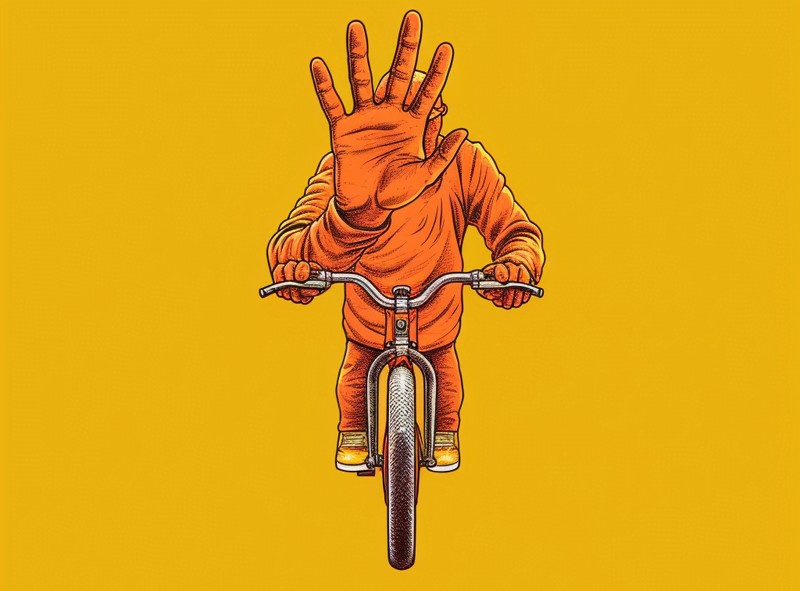
Bike hand signals are gestures or movements made by cyclists using their hands to communicate their intentions and indicate their next actions while riding on the road.
These signals are used to inform motorists, pedestrians, and other cyclists about turns, stops, or other maneuvers the cyclist plans to make.
Safety And Security Tips
Bike helmets are an essential piece of safety equipment for anyone who rides a bicycle. They are proven to reduce the risk of head injury by up to 85%, and can even save lives.
Studies have shown that wearing a helmet is the single most effective way to prevent head injuries while cycling. A study by the National Highway Traffic Safety Administration found that cyclists who wore helmets were 45% less likely to be injured in a crash than those who did not wear helmets.
Helmets work by absorbing the impact of a fall or collision, which can help prevent skull fractures, brain damage, and even death. They are also relatively inexpensive and easy to find, so there is no excuse for not wearing one.
Here are some additional reasons to wear a bike helmet:
- It sets a good example for children and other cyclists.
- It can help you to feel more confident and comfortable while riding.
- It is required by law in many states and municipalities.
So next time you go for a bike ride, make sure to wear a helmet. It is the smart thing to do, and it could save your life.
Here are our top 3 picks for the bike helmet:
Last update on 2025-12-08 / Affiliate links / Images from Amazon Product Advertising API
Why are Bike Hand Signals Important
Due to the absence of brake lights on bicycles, cyclists rely on body language to communicate. So, cyclists must comprehend the significance of learning and utilizing hand signals for several reasons:
1. Effective Communication with Drivers
Hand signals provide cyclists with an effective means of communication with drivers. By clearly and concisely signaling their intentions, cyclists convey important information to drivers, reducing the likelihood of misunderstandings and potential accidents.
These bike signals enable drivers to anticipate the cyclist’s next move, allowing them to adjust their driving behavior accordingly and prevent accidents.
2. Improving Visibility
Cycling hand signals not only convey intentions but also enhance a cyclist’s visibility to other motorists. By using hand signals, cyclists alert others to their presence, especially in situations where visibility may be limited, or they might be in a driver’s blind spot.
Increasing cyclists’ visibility helps reduce the risk of accidents caused by distracted driving or a lack of awareness.
3. Building Trust
Consistently using bike hand signals promotes trust and contributes to a safer road environment. When drivers see that cyclists prioritize their safety and adhere to the rules of the road, it fosters a cooperative and respectful atmosphere.
A Guide to Most Essential Bike Hand Signals for Cyclists
Hand signals are crucial for cyclists to communicate their intentions to other road users. Here are some essential hand signals for cyclists:
1. Slowing Down

When you want to indicate that you’re going to slow down while cycling, use a specific hand signal. Extend your arm with your palm facing downward and quickly move your hand up and down.
It’s important to do this signal before reaching a junction or a stop sign. Pay attention to anticipating when you plan to slow down so that others have enough time to react and can gradually apply the brakes.
2. Left Turn Hand Signal
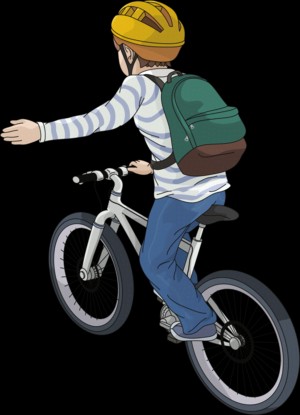
To let cars or other cyclists know that you will be turning left, simply extend your left arm straight out to the side with your hand extended.
It’s important to give enough time for those behind you to see your signal, so make sure to indicate your left turn in advance. Avoid making the signal right before you turn.
This same left-arm signal is also used when you need to change lanes to the left.
In some situations, you may need to navigate through traffic to get into the left lane. For example, if you’re approaching an intersection and need to make a left turn, you should first look over your left shoulder to check for cars.
Before looking over your shoulder, ensure there are no potholes, obstacles, or vehicles in front of you.
I had a collision with a vehicle once while changing lanes. I looked over my shoulder, but the car in front of me suddenly stopped, and I ended up hitting the back of a minivan. Luckily, I wasn’t injured. The point is, to make sure the path ahead of you is clear before looking over your shoulder.
Next, maintain your speed, keep your right hand on the handlebars, and rotate your hips to look over your left shoulder. If it’s safe to do so, make the signal and begin changing lanes.
3. Right Turn Hand Signal
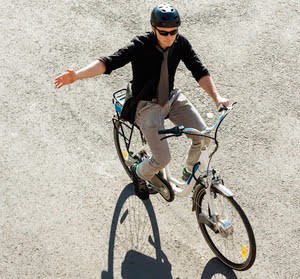
To indicate a right turn, you need to do the opposite of the left bicycle turn signals. Extend your right arm straight out to the side with your hand extended.
This same right-arm signal is used when you need to change lanes to the right. Just like when changing lanes to the left, make sure to check for traffic before switching lanes.
4. Stopping Signal
When you need to come to a stop while riding, there are different hand signals for bicycles you can use to communicate with vehicles and cyclists behind you.
One common method is to extend your left arm downward at a right angle with your hand open. This gesture intuitively indicates that you’re stopping.
Another hand signal I’ve observed some cyclists using is to extend their left arm straight out and then bend it 90 degrees at the elbow, pointing their hand downward.
You can choose which hand signal feels most comfortable for you, but I prefer the first one. I’ve been using it for years while riding on busy streets with cars and cyclists, and it effectively signals to others that I intend to stop.
It’s worth mentioning that if there’s another cyclist close behind you, it might be a good idea to shout “stopping!” to alert them of your intention to stop.
It’s not uncommon for cyclists to accidentally collide with each other, so vocalizing your plan can provide an extra layer of safety.
5. Indicating an Object on the Road
When you’re doing group riding, it can be challenging to see what’s ahead on the road. That’s why the cyclists at the front need to notify their fellow riders about any objects or obstacles they come across.
Once they give the alert, the cyclists behind them will also pass on the message, creating a chain reaction so that everyone is aware of the obstacle. This helps to enhance safety and prevent surprises.
To alert others about an unfamiliar object on the road, extend your arm and point directly at the object while slightly steering away from it. By doing this, you make it easier for everyone to see the object and navigate around it safely.
6. Signaling Holes on the Road
On many roads between towns and cities, you’ll often come across holes. When you spot these holes, it’s important to inform your fellow cyclists, especially if they’re very deep.
To ensure that everyone can safely ride over the hole or avoid it, use a specific hand signal. Extend your arm out to the side and move your hand up and down repeatedly as if you’re waving.
Alternatively, you can extend your elbows outward while holding the handlebars, resembling a bird flapping its wings. These biking signals help everyone to be aware of the hole and take the necessary precautions.
7. Dirty Road
Dirt, sand, gravel, or oil spills on the road may not be as noticeable as objects, but they can be just as dangerous, or even more so because they can make you lose traction and lead to a fall.
To alert others about dirt on the road, extend your arm downward with your palm facing down, and move your hand back and forth as if you’re dusting furniture.
By using this kind of hand signal for biking, your fellow cyclists will understand that there is dirt ahead, and they should slow down and firmly hold onto their handlebars to avoid any potential danger.
8. Dodging an Obstacle
Sometimes, you may come across a car parked incorrectly in the middle of the road or a cyclist who is slower than you and needs to be overtaken. To let your group know about these obstacles ahead so that they can navigate around them safely, use the below-suggested bicycle hand sign.
Shake your arm extended behind your back and point in the direction you intend to move to avoid the obstacle. This signal helps your group understand which side you plan to go to and allows them to adjust their path accordingly.
9. Helping Cars Overtake
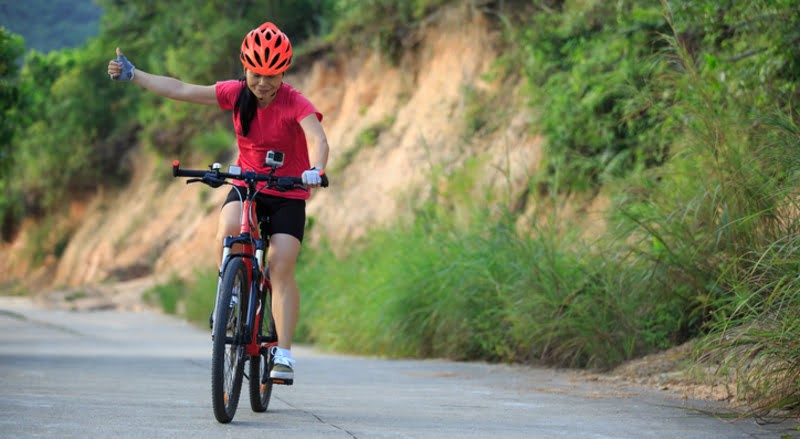
When you’re riding your bike, and there’s a car behind you, the driver might have a hard time seeing clearly and deciding whether to pass you or stay behind. To help them, you need to stay as far away from the center of the road as you can.
If no vehicles are approaching from the opposite direction, extend your left arm and move it back and forth. This signals to the driver that it’s safe for them to pass you without the risk of another vehicle coming from the opposite direction.
By making this simple movement, other vehicles will be able to move more easily, and you’ll prevent a long line of cars and vans from forming behind you.
Closing Thoughts — Bike Hand Signals
Using hand signals while riding a bike can help you avoid getting hit by a car, motorbike, or another cyclist.
Although they can’t guarantee that you won’t be hit by a careless driver or motorist, these turn signals for bikes greatly reduce the chances of accidents caused by misunderstandings.
Not only do these signals keep you safer, but they also make cycling easier and more enjoyable, even on busy roads.
I have covered all the basic bicycle hand signs that every cyclist should know, and most of them are applicable in different states and countries.
If you’re planning to ride your bike in a new state or country, make sure to check the local traffic laws regarding bike signals to avoid confusion and misunderstandings on the road.
Please share your thoughts and feedback on the article in the comments section. Please like, share, and follow our Facebook Page, and keep visiting our website for more guides like this.
Bike Hand Signals — Frequently Asked Questions
Do bike hand signals apply globally?
While bike hand signals generally follow a consistent pattern, it’s worth noting that there may be slight variations in different regions or countries.
It’s a good practice to familiarize yourself with the specific hand signals used in the area where you are cycling to ensure effective communication with other road users.
Can I use other non-standard hand signals?
While it’s recommended to use the commonly recognized hand signals for the sake of clarity and consistency, you can use other non-standard hand signals if necessary, as long as they effectively communicate your intentions to others on the road.
However, keep in mind that unfamiliar signals may confuse motorists or pedestrians who are not accustomed to them, so it’s generally better to stick to the recognized signals whenever possible.
Can cyclists use verbal communication instead of hand signals?
Verbal communication can be useful, but it’s often less effective than hand signals while cycling. Hand signals are visible to a wider range of road users, including those who may not be able to hear or understand verbal commands.
Additionally, hand signals can be understood quickly and at a distance, allowing motor vehicles and pedestrians to react promptly. It’s generally best to use a combination of hand signals and verbal communication when necessary to ensure clear communication with others on the road.
Can bicycle signals be used at night?
Bike hand signals are primarily visual cues, so they may be less effective in low-light or dark conditions, unlike motor vehicles. In such situations, it’s important to ensure you have proper lighting on your bike, including front and rear lights, as required by local laws.
Additionally, wearing reflective clothing or accessories can help increase your visibility to other road users. While hand signals may still be used, it’s crucial to prioritize visibility through lights and reflectors when riding at night.
What should I do if a motorist or pedestrian doesn’t understand my hand signals?
It’s possible that some motor vehicles or pedestrians may not be familiar with bike hand signals, especially in areas where cycling infrastructure is less common. In such situations, it’s important to prioritize your safety and take additional precautions.
If you feel that your hand signals are not being understood, you can use other means to communicate your intentions, such as making eye contact with drivers or using verbal cues.
Additionally, practicing defensive cycling techniques, maintaining a safe distance, and being aware of your surroundings can help mitigate potential misunderstandings.
Related:
